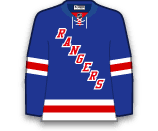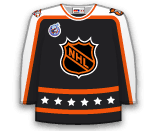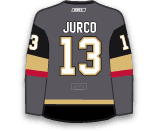With the Predators acquiring Devan Dubnyk on Wednesday, they have sent Mazanec down which leaves them with Carter Hutton and Dubnyk. Mazanec was 8-10-4 with a 2.80 GAA and .902 SV% this season.

With the Predators acquiring Devan Dubnyk on Wednesday, they have sent Mazanec down which leaves them with Carter Hutton and Dubnyk. Mazanec was 8-10-4 with a 2.80 GAA and .902 SV% this season.

Nattinen, 23, was selected in the third round (65th overall) in the 2009 NHL Draft. He has never played in the NHL but has recorded 21 goals and 20 assists (41 points) in 124 games at the AHL level. He has 11 points (5G / 6A) in 37 games with Hamilton this season.
Jaskin suited up for the Blues' last two games, he failed to record a point while averaging 10:29 TOI.

Prout has recorded two assists in 25 games for the Blue Jackets this season. He has been recalled because Fedor Tyutin is ill and may not be able to play tonight.

Klingberg, 22, has played in 33 games with the IceCaps so far this season. In that time, the he has recorded 18 points (11G / 7A) and 20 penalty minutes. He has played in seven career NHL games between Atlanta and Winnipeg where he recorded four penalty minutes.

Sislo was not given much of a chance to produce at the NHL level. He averaged just 6:54 TOI and did not record a point in seven games. He returns to the AHL where he has 20 points (9G / 11A) in 27 games.

Pierre-Luc Letourneau-Leblond played 4:34 and had one shot on goal in his Penguins debut on Wednesday.

Drazenovic played 10:18 and was a minus-1 with three shots on goal in his Penguins debut on Wednesday.
Returning Despres to the AHL suggests that Paul Martin is nearing a return. Despres has been a healthy scratch in the last three games. Overall he recorded four assists and 12 PIMs in 18 games.

Lain is a 24-year-old, undrafted forward who stands in at 6-foot-6, 210 pounds. Lain brings some serious size to the Canucks lineup, but not much in the way of offence. He is not expected to have any fantasy impact during his stint with the big club. He has collected 11 points (7G / 4A) in 35 games with Utica this season.
The Kings traded Ben Scrivens to the Edmonton Oilers today so Jones has been recalled and will be Jonathan Quick's backup. Jones was excellent while Quick was on the shelf with a groin injury, but he likely won't see to much action behind Quick. The Kings have two back-to-back's left in January, so he should see at least two starts in the next eight games.

Andersen was sent back to Norfolk on Friday to get more playing time, but he has been recalled today and could start tonight vs. the Canucks with Jonas Hiller sick. Andersen is 10-2-0 with a 2.07 GAA and .923 SV% this season.

Prout, 23, has recorded two assists, 31 penalty minutes and 41 blocked shots in 25 games with Columbus this season. He tallied one goal and six assists for seven points with 27 penalty minutes and a +15 rating in 28 games with the Blue Jackets during the 2012-13 campaign, leading the club in plus/minus while ranking second among rookie NHL defensemen in that category.

Vey has suited up for 14 games with the Kings this season, he has registered five assists in that span. While with Manchester he has 22 points (6G / 16A) in 20 games.

Strome has no been the offensive splash he was expected to make, he recorded four points (1G / 3A) in 15 games with the Islanders. This could be a temporary move until Travis Hamonic is ready to return, but regardless Strome won't be in the lineup on Thursday.

Toffoli got off to a hot start with four goals and four assists in his first seven games and 17 points (9G / 8A) 22 games. However he has failed to record a point in his last 11 games and now finds himself back in the AHL.

With Tomas Tatar in Slovakia because of his father's funeral, Jurco has been recalled and will play on Thursday. The 21-year-old recorded two goals and one assist in seven games with the Red Wings in late December. Jurco, the 35th pick overall in 2011, showed he has some promise and has played very well at the AHL level as well. He leads Grand Rapids with 32 points (13G / 19A) in 32 games.

Pageau has recorded two goals in 21 games for the Senators this season. His return to the minors suggests that Chris Neil is ready to return to the lineup after missing the last five games.

Jaskin has been recalled to play incase Vladimir Sobotka (flu) can not play tonight. Jaskin has recorded one goal in four games with the Blues this season.

Drazenovic, 26, currently places fifth on WBS with 20 points (7G / 13A) in 26 games this season. Last season the 6-foot, 192-pound Drazenovic split the campaign between the Columbus Blue Jackets and their top minor-league affiliate, the Springfield Falcons of the AHL. Drazenovic spent the majority of the ’12-13 season with Springfield, establishing career highs in assists (36) and points (53) in 62 regular-season games. His 53 points ranked second on the team and 17th in the AHL.